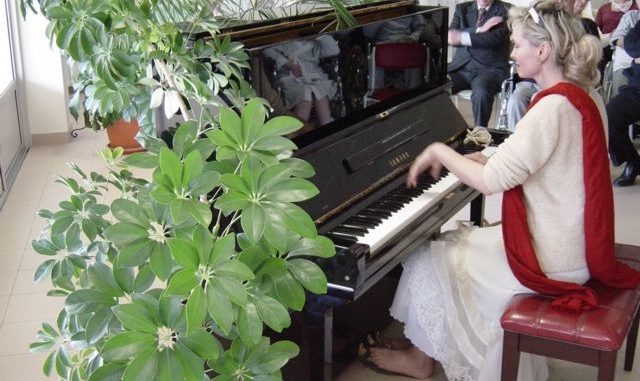
Elizabeth Sombart first fell in love with the piano at seven years old and entered the Strasbourg Conservatory soon after. She quickly distinguished herself on the instrument and snared numerous awards early on a well, such as the National Piano and Chamber Music first prize. Studying with Bruno-Leonardo Gelber in Buenos Aires, the University of Mayence’s Sergiu Celibidache, and Vienna’s Hilde Langer-Rühl furthered deepened her skills and discipline before she fully emerged on the classical music scene.
INSTAGRAM: www.instagram.com/elizabeth_sombart/?hl=en
Her latest album release Singing the Nocturnes highlights the work of popular and respected composer Frederic Chopin. Chopin is a well-known name, even carrying cachet with casual classical music fans, but his work hasn’t been exposed and explored with the same thoroughness we see with the canons of Bach, Mozart, or Beethoven, for instance. She brings enormous sensitivity to her role. There isn’t any obvious re-invention of Chopin’s pieces for contemporary audiences, that isn’t her job, but she has chosen a series of works that are primed for connecting with listeners.
The melodic strengths of the pieces are ample. Tracks such as “Op. 9 No. 1 in B-Flat Minor” and its successors conjure melodic ideas in a variety of ways. The pacing of these tracks never rushes their development and the threads running through each of the Opuses achieve their goals through a process of accumulation. These are never compositionally obvious. Unexpected cascades of notes are common in the aforementioned track and others such as “Op. 9 No. 2 in E-Flat Major” and “Op. 15 No. 1 in F Major”, among others. There are wild cards scattered throughout the album.
Elizabeth Sombart – Frederic Chopin, Nocturne No 8 in D Flat, op 27, No 2 (Official Music Video)
Elizabeth Sombart plays one of the Nocturnes that she recorded in Rome in 2012.Record available on CD and onlineRésonnance Foundation CD store:www.res…
“Op. 27 No. 1 in C-Sharp Minor” strikes a memorably ominous note. It begins as an almost slow rumble, a sleeping giant rousing to life, but it’s never crass. Chopin, through Sombart, orchestrates the mood of this piece in a masterful way that generates tension from the outset. We’re transported back into lighter territory with “Op. 32 No. 1in B Major”. There is a natural progression in the development of the collection overall; it isn’t obvious but Chopin’s well-honed sense of construction shines throughout.
AMAZON: www.amazon.com/21-Nocturnes-Elizabeth-Sombart-piano/dp/B009LE2AJA
The minor key underpinning of “Op. 48 No. 1 in C Minor” is reminiscent of the earlier track in a similar key, but there’s a lot more overt melodic activity over the top than its predecessor. The almost cyclical nature of the recording, moving from major to minor keys, pays off with a climatic ending that doesn’t show its cards all at once but, instead, reveals them over time. “Op. 55 No. 2 in E-Flat Major” is much livelier than many of the other pieces, but it never goes over the top. Sombart’s piano lines, however, skirt the edges of bombast yet achieves unexpected climatic grandeur. There is a strongly cinematic flavor to these compositions. It explains, in part, why so much of the composer’s work has appeared in films over the last century plus. Elizabeth Sombart certainly does a superb job bringing his work to life in 2021.
Clay Burton
